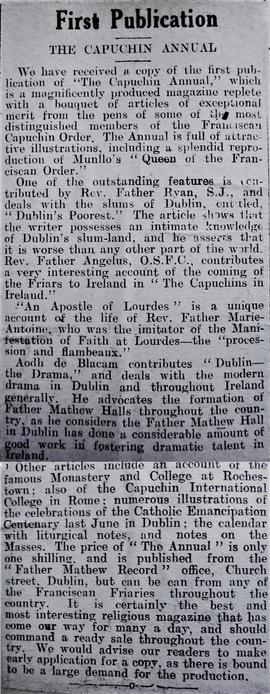The subseries comprises a small collection of records relating to various Irish landlord defence associations and related loyalist and unionist political organisations in the late nineteenth century. The collection includes mostly printed circulars, fliers, and ephemera sent to members of these organisations. The goal of these interrelated associations was to defend the rights and interests of landed proprietors in Ireland. The organisations were set up in response to the activities of the Land League, a tenant farmer movement, which had as its primary aim the reform and eventual abolition of landlordism in Ireland.
The collection includes records generated by the Property Defence Association (PDA) which was formed in Dublin in December 1880 to assist landlords targeted by the Land League or by rural agitation in general. Led by James Stopford, 5th Earl of Courtown (1823-1914), the association served writs on tenants, provided (often armed) caretakers for evicted holdings, supplied labourers to boycotted landlords, and bought stock and farms at sheriffs’ sales. The Orange Emergency Committee, established by the loyalist Grand Orange Lodge of Ireland, also in December 1880, had similar functions to the Property Defence Association. Both the PDA and Orange Emergency Committee were subscription-based aid organisations. The Irish Landowners' Convention was set up in early 1888 to protect the interests of landowners in the face of agrarian agitation and legislative reforms which enabled tenant proprietorship. James Hamilton , 2nd Duke of Abercorn (1838-1913), was elected its first president and he led the organisation for nearly a decade.
The collection also includes a small number of records relating to the Irish Loyal and Patriotic Union (ILPU), a unionist political organisation, established to oppose the nationalist Home Rule movement. The ILPU was formed in Dublin in May 1885 by a small number of southern businessmen, landowners, and academics. It sought to unite Liberals and Conservatives on a common platform of maintenance of the union between Great Britain and Ireland. The Irish Unionist Alliance was founded in 1891 by ILPU members, which it replaced. The Irish Unionist Alliance (IUA), also known as the Irish Unionist Party, was led for much of its existence by Colonel Edward James Saunderson (1837-1906) and later by William St John Brodrick, 1st Earl of Midleton (1856-1942).
Finally, the collection also includes a small number of fliers and printed ephemera relating to by-elections for the constituency of Trinity College (University of Dublin) in 1875 and in 1887. The college constituency was dominated by a Conservative and Unionist electorate. In January 1875, Edward Gibson, later 1st Baron Ashbourne (1837-1913), was elected for the Conservatives to serve as MP for Trinity College, Dublin. Dodgson Hamilton Madden (1840-1928) was elected Conservative MP for the university in the July 1887 by-election.
Internal evidence suggests that this material was originally assembled by John Ribton Garstin (1836-1917), a landlord and unionist, who served as High Sheriff of County Louth from 1880 to 1881. It has however not been ascertained how these records were acquired by Fr. Senan Moynihan OFM Cap., the editor of ‘The Capuchin Annual’.

